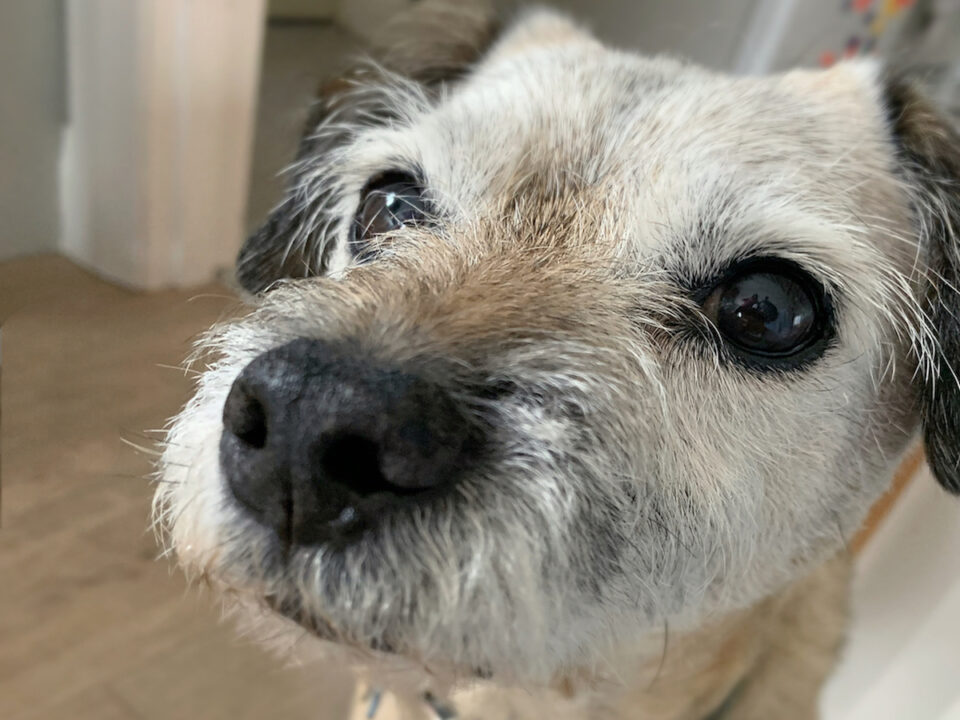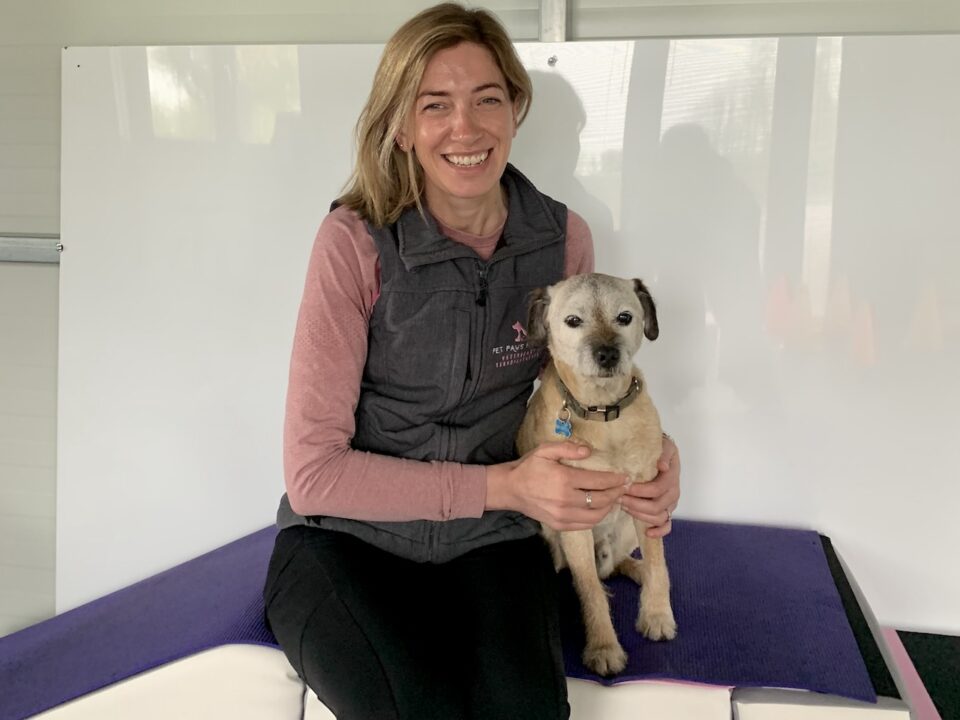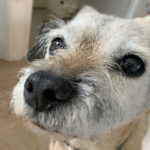
Pet Physiotherapy Methods and Mobility Care for Senior Dogs
July 31, 2024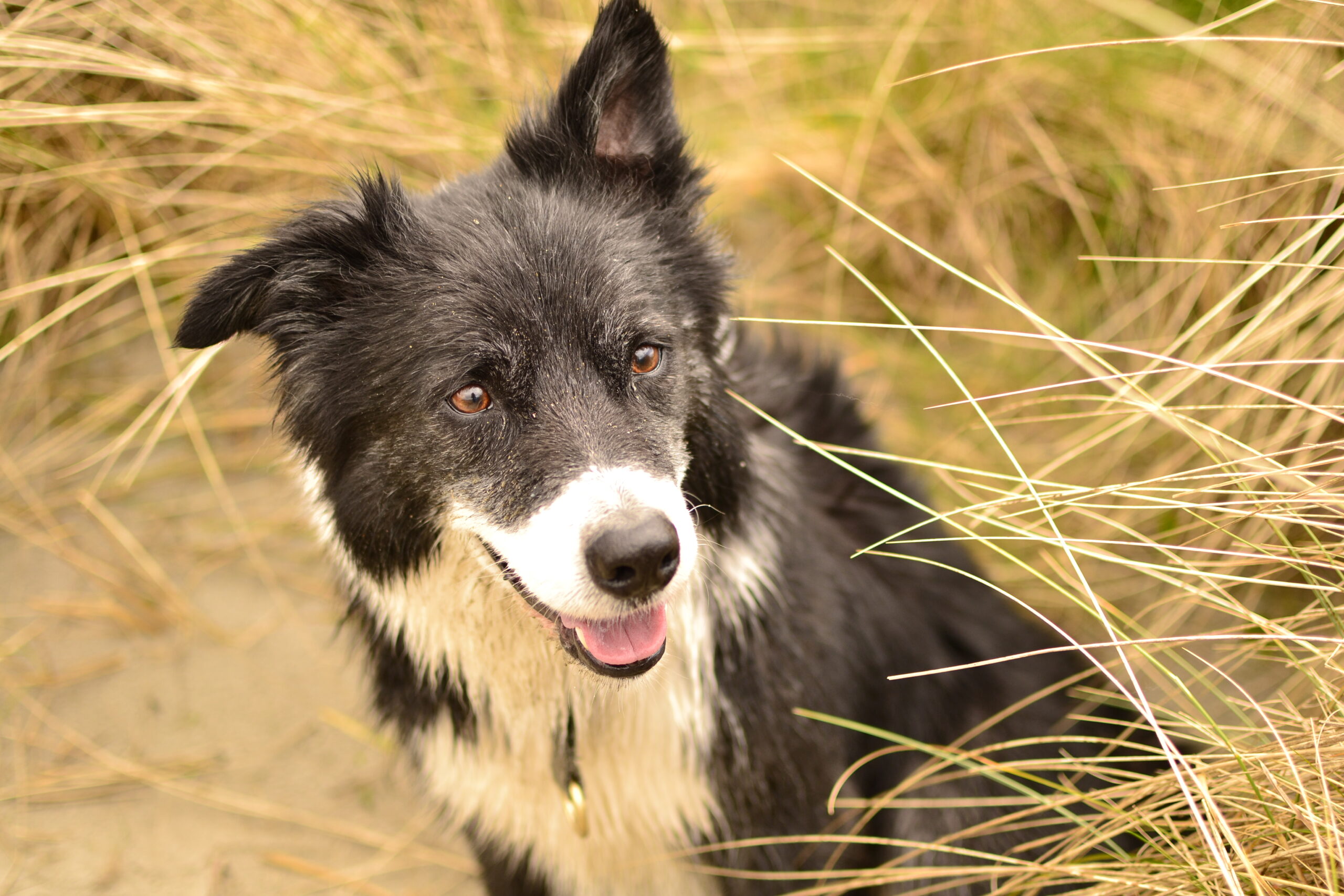
Have you ever wondered what kind of exercise suits your senior dog best? What training matches their personality, keeping them happily engaged? And what activities are ideal for them to maintain their agility and mental sharpness?
In this feature, we interview Caroline Schaefer, the founder of Dogsercise, who shares her expertise on fun and effective ways to keep senior dogs active and happy through various games and exercises.
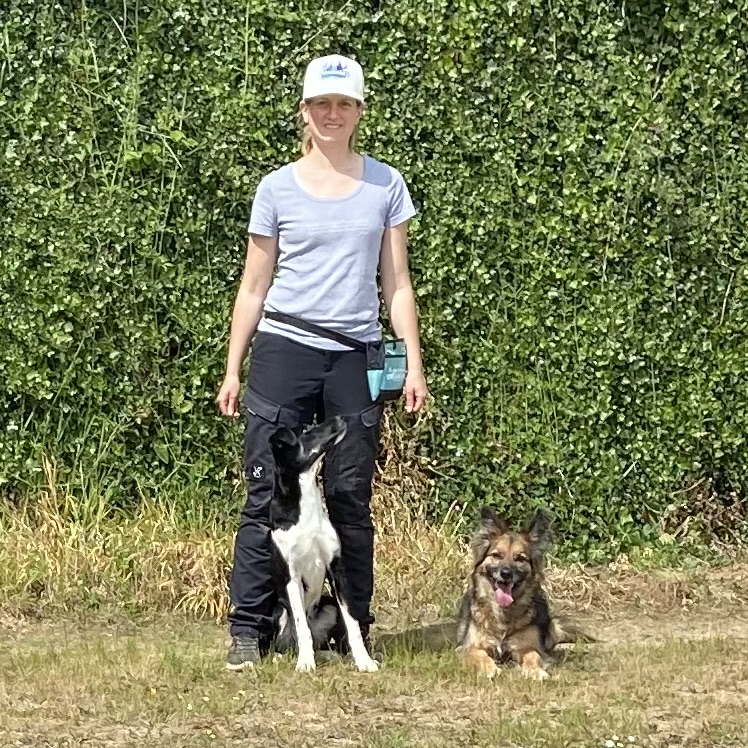
Caroline Schaefer
Enhancing Senior Dogs' Lives: Purposeful Play and Exercise
Do you believe that old dogs can’t learn new tricks? It’s not true. At the " Thriving Canines Day Retreat," a special workshop was held where different activities were designed specifically for senior dogs. Caroline, with over a decade of game training experience, collaborates with pet physiotherapist Deirdre Duggan, delivering senior sports testers, enrichment exercises, muscle mass and tone assessments, and even massage techniques. These sessions have helped dog parents enhance their dogs’ core stability, coordination, brain workouts, sports foundations and learning new tricks successfully!
Caroline's journey as a dog trainer began with her Border Collie, Socki (See Feature Photo), with whom she excelled in Flyball and even participated in the European Flyball Championships when they were in Germany more than 10 years ago. Upon moving to Ireland in 2011, Caroline observed a shortage of training opportunities and game-based methods, which motivated her to establish her own training program to meet these needs after her beloved Socki passed away.
In 2019, when I had to think about my career, making it flexible enough to accommodate my family after I had my daughter, dog training became that thing again. I really enjoy doing this and there's still nothing here. Why not dive into this? Socki had unfortunately passed in 2016 already. He was only 10. So that was devastating. Dogsercise is kind of his legacy!

Initially, Caroline became a certified dog trainer through Absolute Dogs' Pro Dog Trainer course, which provides game-based methods. Drawing from her background in Flyball, she then expanded her focus to include various aspects of dog sports. Her expertise now spans scent detection, Mantrailing (training dogs to locate people by following scent trails), Trick training, and Hoopers.
"It's where my passion is. It's what lights my fire. I really want to focus on that because it's so beneficial. Sports can play a huge role in satisfying dogs' needs and creating an overall happier, more content dog in a controlled way and environment. It's all about relationships, and creating better communication and understanding with each other because in everything we do, we work as a team.

What are the benefits of exercise for dogs?
Caroline emphasizes that exercises are crucial for fulfilling dogs' natural needs, especially in urban environments where they cannot freely express their instincts. The activities she provides not only enhance dogs' participation and emotional release but also improve their mental flexibility and agility. This is especially helpful for maintaining dogs' coordination as they age.
The mental and the physical aspects of exercise are really important. When you teach your dog something new, you create new neural pathways in the brain all the time. Sometimes it's harder to create them because habits have formed so that's where the older dogs struggle a little bit. We just need to be a bit more patient, because it takes more repetitions for them to actually create that neural pathway.”
Scent Activities and Hoopers for Senior Dogs
Caroline encourages dog parents to practice scent activities and training with their senior dogs, as these can be conducted in small, manageable spaces. These activities provide both mental stimulation and physical exercise without undue strain and can be customized to your dog's specific needs.
For example, you can hide a tiny piece of Kong or another small object in a wall or any safe place your dog can reach. Then, direct your dog to search for it using their keen sense of smell. When your dog finds the Kong, they need to place their nose on the spot and hold that position for a bit to let you know they've found it. Once you confirm the discovery, reward your dog with food or a toy. This game helps to stimulate the dog's cognition and emphasizes teamwork and communication, enhancing mutual trust and cooperation between the dog and the owner.

The owners are so dedicated; they also do physiotherapy and hydrotherapy to manage his muscle wastage. Bringing him to scent activities is just like magic; he literally blossoms. The owner can do jumping jacks around him, and he will not budge and maintain his indication. It's absolutely incredible. Scent work absolutely changed his life.”
Hoopers can be a fast sport and it can be a slow sport. The courses are flat and flowing, so it’s low-impact. The dogs have to respond to our cues – which direction to go around the barrel, which hoops to go through? There’s constant communication between the dog and handler and that really, really helps. We’ve seen great improvement in their overall relationship.”
Caroline has also discovered that these activities not only enrich dogs' sensory experiences and strengthen their bond with owners but can also transform their personalities. For instance, Nova, who used to be introverted, is now thriving, becoming more social and actively interacting with others in the class.

We started her in a group session with scent-based sports, which are very calm and provide lots of space. This was her first activity, and from there, she really took off. Now, she's one of our Hooper superstars and is very relaxed in a group setting.”
What is the best way to train a senior dog?
Exercise training offers numerous benefits to dogs, but it's important to execute it safely and with specific techniques to achieve optimal results. Caroline shared several key insights on how she interacts with her 10-year-old German Shepherd Collie mix, Sansa, and her young pup Hamish. She reminds owners to pay special attention during training sessions with their senior dogs.
1.Safety First:
Safety should always be the top priority in any form of training or activity. It's essential to assess the dog's physical condition to ensure they are healthy and capable of safely engaging in activities, minimizing the risk of skeletal or muscular injuries.
Safety is really important. If dogs skip steps, depending on what you're teaching, you have to slow them down and bring them back to doing it your way, so they don't hurt themselves. Very few dogs have a sense of self-preservation. They will just go for it and work themselves into the ground. So, we have to be very mindful."
The environment also plays a crucial role in training. Avoiding slippery floors, especially for older dogs, reduces the risk of strains and accidents. Opting for grassy areas or using yoga mats provides better traction and cushioning, ensuring a safer training surface.
Be very mindful about where you're doing your training and what your setup is. You can already cause strains on slippery floors when they're younger, leading to issues down the line."
2.Learning Ability and Duration:
Be aware that each dog has unique capabilities and limitations, such as physical conditions, learning abilities, and attention spans. Adjust training plans accordingly to accommodate these differences and optimize learning potential.
There are so many tricks out there that are really cool. They look so, so fancy. A lot of work goes into it. The dogs need to be very physically fit to do it, so they don't hurt themselves. I would always recommend doing research and being very aware. Awareness is absolutely key when I want to teach my dog something new."
Caroline also points out that typically, a dog's attention span ranges from 5 to 10 minutes. Puppies may have shorter attention spans, while adult dogs tend to have longer spans with occasional dips during adolescence.
Breaking training sessions into short, frequent blocks is effective, especially for senior dogs. Be patient with them as they may need more time to learn new skills. Aim for sessions of about 5 minutes each, followed by a break of at least 10 to 15 minutes. When introducing new skills, break down tasks into manageable steps to avoid confusion. If they become tired, allow them to rest, and you can practice with them another day.

3.Enjoy the Training Process:
Training should be an enjoyable interaction that strengthens the bond between dog and owner. Focus not only on teaching new skills but also on fostering a positive experience for the dog, avoiding undue pressure for perfection. As Caroline emphasizes:
Be curious, try new things, try to find something that really works and that they blossom in. It brings them joy as much as it brings you joy to do this with them. Sometimes it's not so much that you 100% enjoy the activity, but you enjoy how your dog enjoys it."
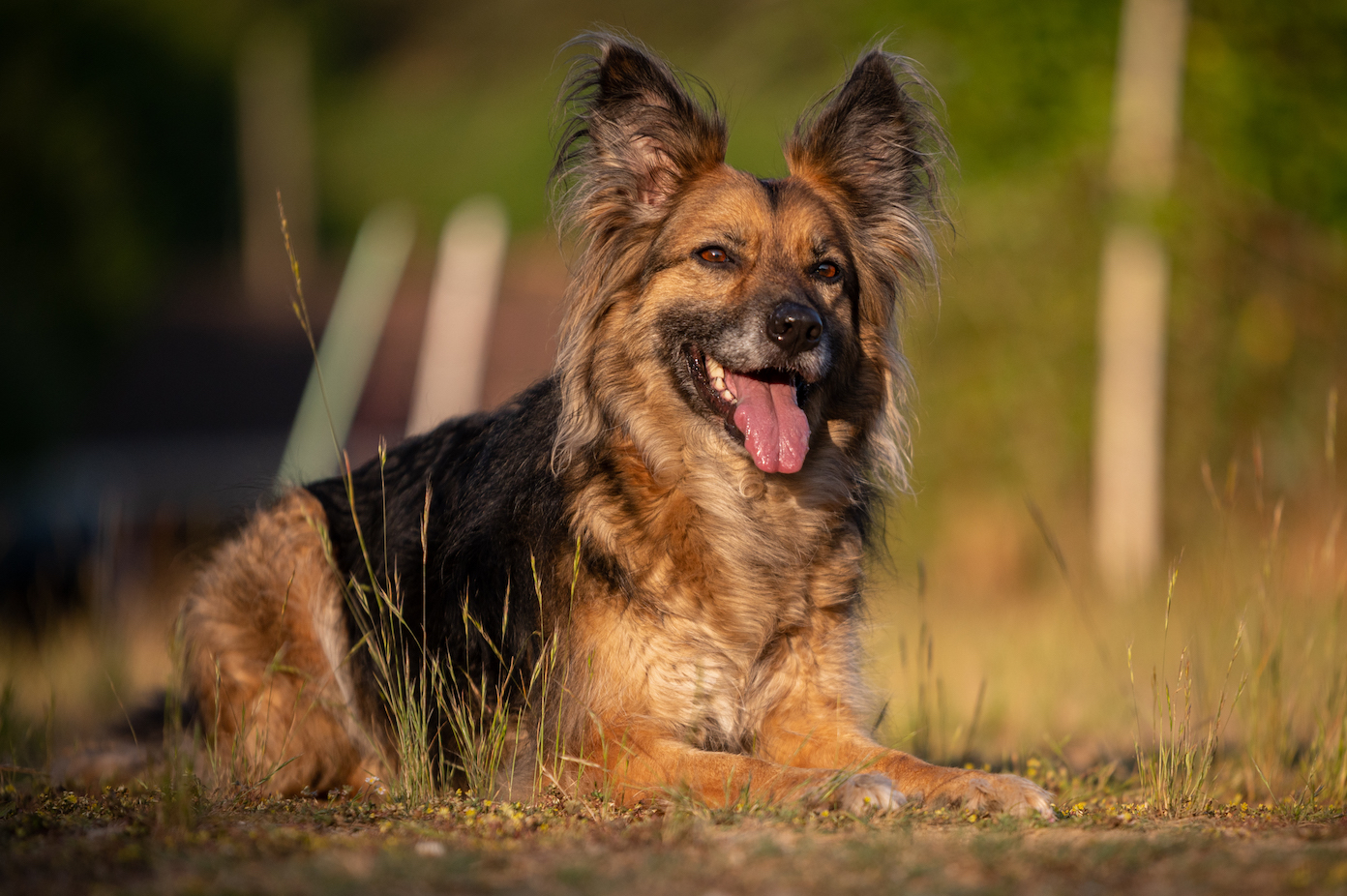
Especially with older dogs, owners likely have built a strong bond over the years, understanding their preferences and what ignites their enthusiasm—whether it's sniffing around or engaging in playful activities. The key is to tap into what excites them because when they're enjoying themselves, it's a win for both of you. In the end, Caroline also encourages senior dog parents with a heartfelt reminder:
Just keep them happy, and healthy, with a good quality of life. Be proactive, see what your dog enjoys, feed into that, and enjoy life with them because their lives are so short. They're only with us for such a short time. I think we have an obligation to create a life for them that is fulfilling, interesting, fun, and filled with love.”

